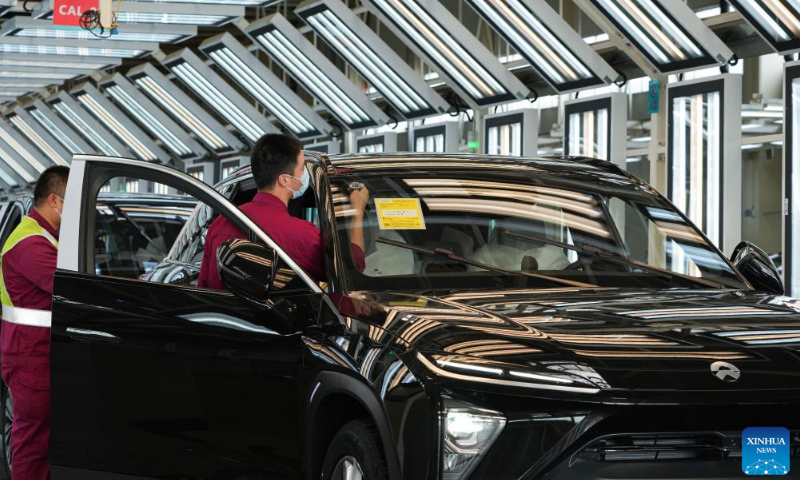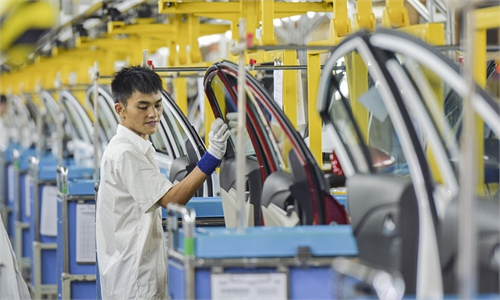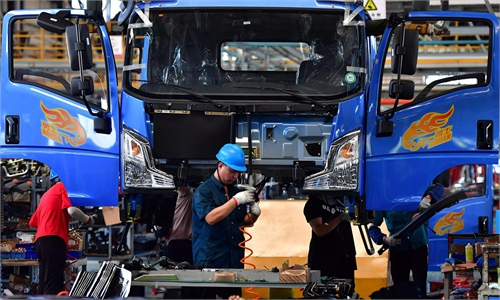Caixin PMI contracts to 49.5 in August, indicating private sector recovery slowing down

Technicians work on a vehicle production line at the NIO manufacturing base in Hefei, east China's Anhui Province, April 21, 2022. The NIO manufacturing base in Hefei is gradually resuming production. (Xinhua/Du Yu)
China's factory activity in August contracted following two months of expansion, the private Caixin manufacturing purchasing managers' index (PMI) showed on Thursday, with the index sliding to 49.5 from 50.4 in July.The contraction was due to repeated epidemic outbreaks in some Chinese cities and the tight electricity supply brought about by consistent drought and heat waves.
China's official manufacturing PMI in August released by the National Bureau of Statistics (NBS), which rebounded from July's 49.0 to August's 49.4.
The Caixin PMI has been above the 50-point mark in June and July, but the rate of increase has slowed, as some of the interviewed companies said that high temperatures led to power outages, and factories were forced to temporarily halt production, restricting growth.
Meanwhile, the new manufacturing orders index and the new export order index both ended their expansion momentum in the previous two months and fell into contraction range.
According to the surveyed companies, factors such as hot weather, tight power supply, repeated epidemic flare-ups, and the deterioration of the global economic environment have led to weakened demand at home and abroad.
Against the backdrop of sluggish manufacturing demand, the job market has yet to improve. Some surveyed private companies said that they cut hiring due to plans to reduce scale amid weak demand.
Affected by the epidemic and power supply woes, slight delays in suppliers' delivery time were reported in August.
China's economy remains in a recovery phase, but local epidemic situation and high temperatures have disrupted progress. The downward pressure on the economy has increased and the foundation of economic recovery is not solid, Wang Zhe, senior economist at Caixin Insight Group said.
An executive meeting of the State Council, China's cabinet, on Wednesday stressed the implementation of a range of stabilization measures to create effective demand and consolidate the foundation of economic recovery.
The meeting stressed that the package of 33 stabilization measures should be fully functional, and details of the follow-up 19 measures that were announced last week should be finalized in early September.
NBS senior statistician Zhao Qinghe said on Wednesday that the Chinese economy continued a recovery trend, as various regions and departments implemented national stabilization measures, while companies addressed adverse factors like COVID-19 resurgences and extreme weather patterns.
The total revenues of A-share companies, equivalent to more than half of China's annual GDP, rose 10 percent in the six months of 2022 despite the pandemic, reflecting a robust domestic economic recovery.
Chinese home appliance maker Midea Group Wednesday released its financial report for the first half of 2022, showing its half-year revenues rising 5.0 percent to 183.7 billion yuan ($26.61 billion). Its net profit came in at 16 billion yuan, growing 6.6 per cent year-on-year.
Global Times


